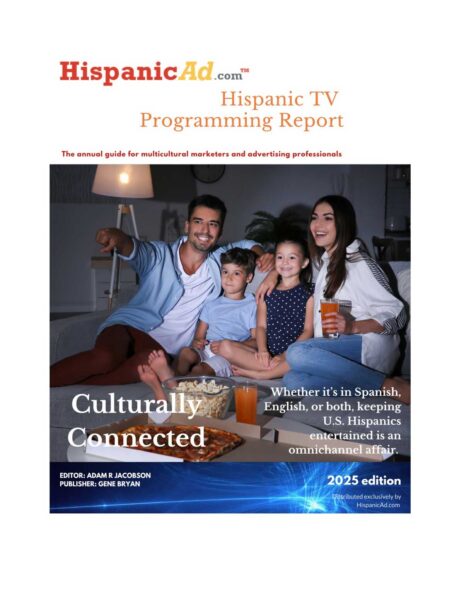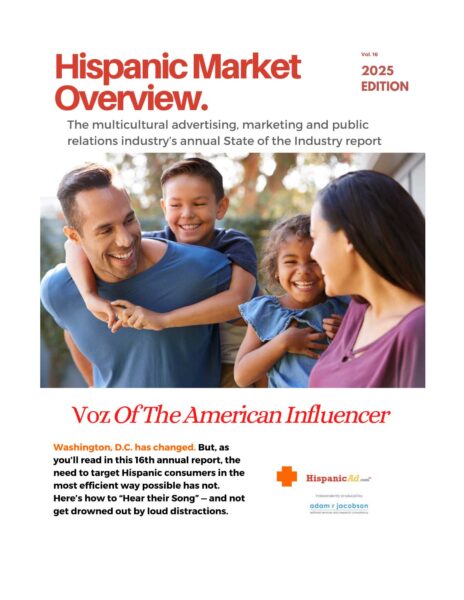The Influence of Culture on Marketing & Advertising to Multicultural Consumers – A Review.
February 22, 2011
In the third chapter of her book “Communicating with the Multicultural Consumer: Theoretical and Practical Perspectives”, Barbara Mueller looks at culture’s influence in marketing to the multicultural consumer. She underscored the fact that culture plays an important role in shaping the values, attitudes and characteristics of consumers, which is a key determinant of behavior.
It has long been acknowledged that culture is learned and in her description of the major institutions which help to form cultures, Mueller included mass media. This is quite fitting as mass media not only reflects the culture of the day but also influences culture, not only in America but across the world. Not only does the media contribute to the “Americanization” of other cultures, but it also serves as a vehicle for the preservation of the culture of immigrants and their families. The proliferation of media outlets targeted at ethnic minorities have represented not only a piece of the culture of the home countries of ethnic minorities but they also serve as a conduit for the maintenance of connections with their home countries. Marketers have endeavored to target multicultural consumers through these outlets and while it has been debated as to the best way to reach multicultural consumers, media targeted to the multicultural consumer undoubtedly have their place in this equation.
The concept of cocultures is very new to me but I definitely understand the reasoning behind the concept. While I definitely agree that the concept of sub- cultures could be seen as indicative of the thinking that the cultures of non- Hispanic white ethnic groups are inferior to “mainstream” culture, my agreement with the concept goes much further. In the current environment, there are very few cultures in the United States that can be considered to be “sub”, just like ethnic minorities are no longer that in the truest sense. The cultures of other ethnic groups have not only been recognized due to the sheer size of the multicultural population, but these cultures have become just as influential and traces of them have become part of mainstream culture. It is clear that these cultures exist alongside each other and while multicultural consumers participate in the mainstream culture, they still maintain the core values fundamental to their “motherland” cultures.
People are ethnocentric by nature and by being conscious of that fact, we can try to neutralize this effect. In her discussion of self -reference criterion and ethnocentrism, Mueller touched a point that is quite similar to one Morse also highlighted in his book: the importance of multicultural intelligence. Understanding the multicultural consumer is key and while most companies pass this responsibility on to agencies that specialize in targeting these groups, it is likely that the empathy described by Mueller will never be developed in these companies. Simply hiring an agency to take care of that side of the business is not enough because it has to go past just marketing. It has to be truly adopted as part of a company’s philosophy or can be interpreted as hypocrisy, which is a recipe for disaster. This of course is one of the reasons that companies still commit huge blunders even with multi- million dollar specialist agencies.
The issue of language in advertising was also covered by Mueller and like Morse, she reiterated the importance paying close attention to translation (and back translation) as well as portraying stereotypes and using jargon unique to a particular ethnic group. While mainstream culture is peppered with language, dress and symbols from other cocultures, there is no established protocol for their use by marketers in trying to reach these groups. The general rule of thumb seems to be “be genuine” and when in doubt: test and retest your messages before going public.
The debate still rages as to which language is best for reaching Hispanic consumers and while the pundits have no shortage of evidence for either side of this debate, Mueller in this chapter raises an important point: there are language differences within ethnic groups. I was quite surprised to find out that while my Chinese and Taiwanese colleagues were perfectly at home conversing with each other, my Thai friend could not understand a word. The situation is quite similar among the Hispanic population, while most Hispanics (foreign born) speak Spanish, most countries have their own dialects and prefer to be communicated to in their mother tongue. This represents and additional challenge for persons targeting these markets, they have a choice between using a more generic form of the Spanish language that will be understood by all but not be specific to any particular group, or target a select group and use their dialects. This may be profitable for companies targeting Mexican- Americans as they represent the majority of the Hispanic population. The language debate in my opinion is just the tip of the iceberg, communicating with ethnic groups in their mother tongues does not necessarily translate to speaking their language; it has been established that language goes beyond words.
The communication dynamics of a culture is multifaceted and in covering both the verbal and non- verbal nuances of cultures, Mueller touched on some very important points. The cultural values of the varying ethnic groups are quite diverse, while Hispanics and African- Americans are comfortable interacting in smaller personal spaces; it is not the same for non- Hispanic whites. The use of body language and other subtle cues by Asian- Americans is quite interesting as it would mean that advertisements in the mass media, which are of the “hard sell” variety, might actually be seen by this group as insulting, the question therefore is: are we really reaching the Asian- American market? People of Asian descent, based on collectivist home country cultures are known to deeply rooted family values and so may be responsive to advertisements and brands that emphasize family loyalty, would that be sufficient to overcome the Asian aversion to “pushy” advertisements? Is there a happy medium? It would be very interesting to find out how Asian-Americans respond to these types of ads.
The topic of the cultural values of the various ethnic groups is a very important one in multicultural marketing. Ethnic groups respond better to ads that reflect their cultural values and in order to reflect these values companies and their agencies have to first understand them. The issue of religion is a very sensitive one and although some advertisers have been attempting to integrate the religious beliefs of their target audiences into their campaigns, there is some uncertainty as to whether or not it should be considered “hallowed ground”. Many ethnic groups mistrust brands that try to use the religious beliefs of their target audiences as a platform for connecting with these people. African- Americans for example, are very religious and are not very happy with these new trends. This for me raises a question, have we gone too far as marketers? Where does the buck stop? Do we, in our quest to reach consumers run the risk of alienating them by violating their “spiritual space”?
The question of culture affecting not only what we buy, but why we buy was particularly interesting. There have been some studies that look at culture’s relationship to consumer behavior and recent research has looked at brand engagement, Mueller touches on a similar school of thought. For some people, brands represent more than their utilitarian purposes, but serve as different symbols for various cultural groups. Based on the cultural values of various groups, various things are valued be it individuality, accomplishment or respect, some brands based on their positioning and consumers perceptions of these brands have come to represent these things for consumers. These may fall in the category of terminal or instrumental values.
It is quite clear that there is much more that we can learn about the cultures of the various cultural groups within the US that could give us greater insights into connecting with them. I think the future of multicultural research lies in understanding the nuances of culture that determine how multicultural consumers think feel and relate to brands in the marketplace. Further investigation and analysis of culture is necessary and more instruments dedicated to that field of research may need to be developed.
By Neleen Leslie
Student
Florida State University































